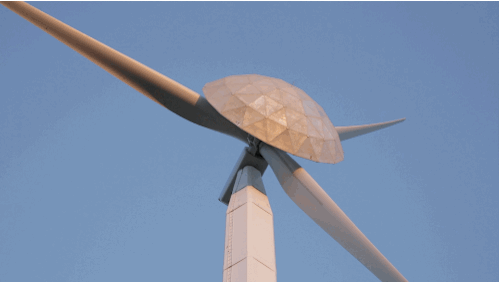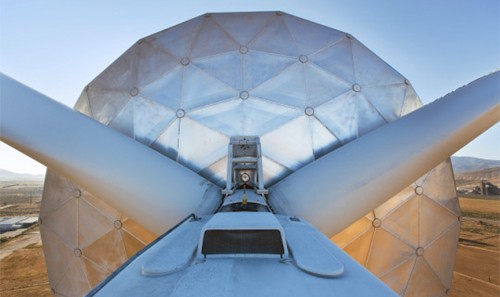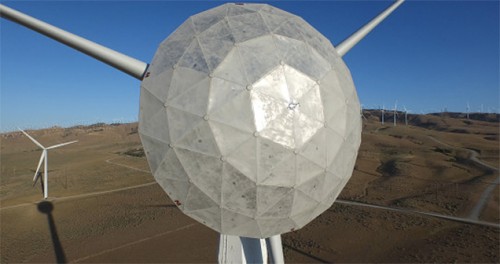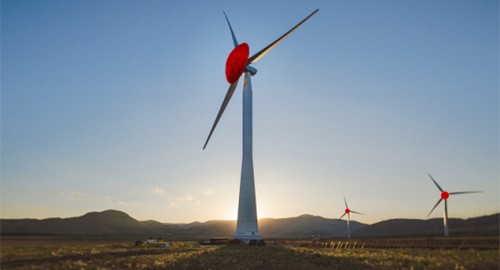
In Tehachapi California a new experiment in wind power is being tested. GE is applying a large dome at the rotor hub of three-blade horizontal axis wind turbines. The 60 ft. diameter space frame attachment channels the wind to the perimeter of the rotor where it produces more power.

The 20,000 lb structure can help to increase the power output of existing turbines by around 3%, which has the potential to bring the cost of wind power down significantly below its already low cost. Interestingly, it could also impact the form of future blades, allowing them to be designed for greater output without increasing the overall diameter of the rotor. This is important because the size of wind turbines has increased to the point where it is already very difficult to transport the blades to installation sites.

The ecoROTR is in some way like the Compact Acceleration Wind Turbine (CWAT) experiments that channel the wind to the blades from the perimeter of the rotor, but instead it is working at the center, which potentially means less material cost. The added material cost of the CWAT rings has made it difficult for them to compete in the marketplace.
Of course LAGI is in favor of the compact acceleration idea being applied to public art applications and many past LAGI submissions have incorporated some variation of it.
We’re really excited about this advancement. It’s not every day that there is such a dramatic shift in the form of wind turbine design. If the ecoROTR experiment proves successful it could have a reverberating impact on the design of our energy landscapes. As these new rotor hubs are added on and as blades take new shapes, future wind turbines may look very different than current models. The elegantly thin profile of today’s turbines are nice, but perhaps there are opportunities here for creativity?
We modified the image below just ever so slightly to get a feel for what might be possible for the turbine proboscis of the future!

via This Captain America-Style Shield Makes Wind Turbines More Powerful
